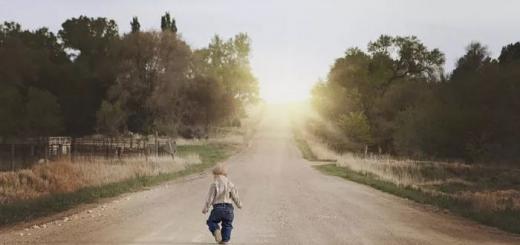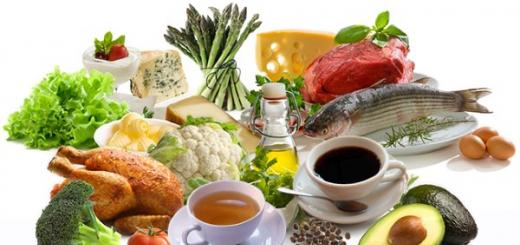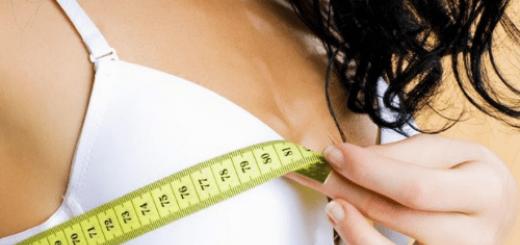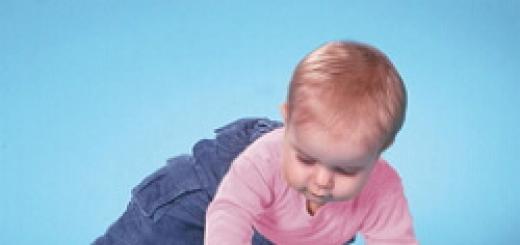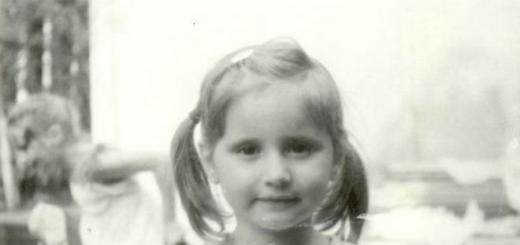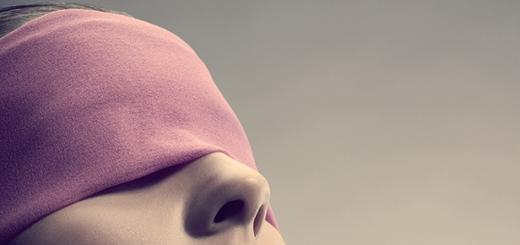Much has already been written about the use of baking soda in one area or another. The properties of this substance make it possible to use it in the kitchen when cooking, in everyday life to clean various surfaces from grease and plaque, in the treatment of various diseases, and so on. Another use of sodium bicarbonate is the ability to organize educational shows for children, for example, you can make your own volcano from soda.
Stock up on baking soda and vinegar because your kids will ask for it again and again!
This is possible due to the ability of soda to react violently with certain substances, such as vinegar. And one of the most common experiments involving this property of sodium bicarbonate is the demonstration of a volcanic eruption. Below is a detailed look at how to make a volcano from baking soda.
Volcano eruption experience
The first thing you need to know is why such a reaction occurs when combining soda and vinegar. Without going into details: soda has pronounced alkaline properties, while vinegar, on the contrary, has acidic properties. When their molecules combine, both environments are neutralized to neutral, resulting in the release of carbon dioxide, the rapid release of which causes the appearance of foam.
Experiments with the combination of these substances can be used not only as a demonstration of a natural phenomenon. This is a good time to explain the basics of the interaction of various substances and the reactions between them.
Preparation for the experiment begins with making the volcano itself. This can be done in several ways, which will result in reusable or disposable inventory. To create the first one, you will have to put in more effort and time, while the second one is suitable for a spontaneous decision to please children with an interesting show.
Method No. 1
In this case, a reusable model is created for repeated execution of the experiment.
To make the Vulcan body, the following components are needed:
- an ordinary 1.5 liter plastic bottle for any drink;
- a flat plastic lid (for example, from disposable food containers);
- tape of any kind;
 It is not necessary to sculpt a “volcano” from new plasticine; already used plasticine will do just fine.
It is not necessary to sculpt a “volcano” from new plasticine; already used plasticine will do just fine. - gypsum or alabaster (can be replaced with salt dough);
- gouache with PVA glue, in a ratio of 1:1 (can be replaced with acrylic paint);
- tray or cutting board (as a base);
- paper;
- foil.
Sequencing:
- Building the foundation. The plastic bottle must be cut, measuring the desired height of the cone (the upper part is needed). The resulting base is carefully attached with tape to the above plastic cover.
- Attaching the base of the volcano to the base. The resulting structure is attached with tape to a tray or cutting board. You can also use a suitable piece of plywood or thin board as a base.
- Forming a cone. Using pieces of paper and tape, a cone is formed around the bottle with the upper base at the edges of the neck. To avoid subsequent soaking of the paper pulp, the cone is wrapped in foil.
- Finishing the “walls” of the volcano. Dilute gypsum or alabaster to a thick sour cream. The resulting mixture covers the slopes of the “fire-breathing mountain.” Using a toothpick or fork, the relief of “mountain slopes” and trenches are formed for the preferential movement of “lava”.
- Final finishing. After the “slopes” have completely dried, they should be painted with gouache mixed with PVA. It's best to use brown and black paint and touch up the "lava" troughs a little with red.
After preparing the “volcano”, you need to deal with the “lava”. It, of course, needs to be prepared immediately before the demonstration of the “eruption”. The components in this case are:
- baking soda - 10 g;
- dishwashing detergent - 2 drops;
- gouache or red food coloring;
- vinegar - 10−15 ml.
This amount of ingredients is indicated for the minimum amount of “lava” and low “volcano”. If it is necessary to increase the intensity of the “eruption”, the amount of all components increases accordingly. The sequence of actions in this case is as follows:
- Combine baking soda, the chosen type of dye and dishwashing detergent, stirring thoroughly.
- Pour the resulting mixture into the “volcano mouth”.
- Add vinegar carefully to the “mouth” and enjoy the result.
For a more active reaction, vinegar can be poured in quickly. By the way, the added dishwashing detergent is responsible for this.
Method No. 2
As mentioned above, a volcano made using the previous method allows you to obtain a prop that can be used repeatedly. However, this takes quite a significant amount of time. For one-time use, you can make props using a simplified method.
 The spectacle is truly spectacular
The spectacle is truly spectacular The ingredients in this case will be:
- sheet of cardboard;
- plasticine;
- small jar;
- tray or cutting board (as a base).
The sequence of actions is as follows:
- Roll the cardboard into a cone, giving the required “slope” angle. Glue it in this position or secure it with tape. Cut off the top part to obtain a “vent”.
- The outer part of the cardboard is covered with plasticine, forming “ledges” and “grooves”.
- Before demonstrating the experiment, the jar is filled with a mixture of soda, dishwashing detergent and dye, after which it is placed on the base and covered with a “mountain” cone.
- Next, vinegar is poured into the mouth and the “eruption” begins.
It is possible to conduct an experiment with citric acid or lemon juice. In this case, vinegar is not used, and soda should be added last.
The properties of baking soda allow this product to be used in a variety of situations. And as everything described above shows, even as a means of entertainment or to broaden the horizons of children. Thanks to the simple preparation and the ability of soda to react violently with vinegar, you can give your children an unforgettable spectacle that they will ask for pleasure from more than once.
Have you heard the joke that soda is a once-in-a-lifetime product? So, this is a joke for the lazy, because people, in tune with the times, have long been using such a miracle remedy not only for cooking, but for treatment, for entertainment and teaching children chemistry and physics. Did not know? Then try a soda volcano first; not only the children, but also all the adults in the household will be delighted.
Video of a volcano eruption
How to make a volcano from soda
If you are ready to experiment, then it’s time to prepare supplies and work miracles.
Soda volcano - an interesting chemical experiment for kids
What will you need for the experiment?
So, to carry out the experiment you will definitely need soda, the volcano will only work with it, this is the basis of the experiment.
In addition to this component, stock up on the following:
- Vinegar or its acid (it is permissible to replace it with citric acid, but then in the form of an aqueous solution).
- Plasticine (ordinary plasticine for children will do). It can also be replaced with salted dough (but more on that later).
- Water (they say that carbonated water enhances the reaction, which means the experiment will be brighter).
- Plastic bottle (1 or 1.5 liters) of any shape.
- A palette of paints (any dye, gouache, even Easter paint will do).
- Foil (you can replace it with paper, but thick paper - it’s better to take cardboard).
- Double-sided tape.
- Jars or glasses.
- Stand for the volcano (can be a tray or an unnecessary lid from a plastic bucket).
- Detergent.
- Rubber gloves for work.
- Rags and water in case of injury - lava burn.
And, of course, it takes time and imagination, but such a childhood experience can become the highlight of the matrix of memories in adult life.
Recipes for experiments: TOP 3
Video bonus: another version of the volcano
It’s worth trying several proven technologies, especially since such a toy will cost you pennies.
Preparing a volcano from salt dough: step-by-step instructions
The “origin” of such a volcano is from dough, which allows it to be made to “erupt” repeatedly when other recipes are only suitable for one show.
Step 1. Base. For this method, you will need an empty liter bottle of any drink. The only requirement: plastic. The container must be cut approximately in half. Then, using strips (foil or paper), strengthen the body of the volcano by wrapping it. They say that foil holds its shape better, which is a guarantee for reusable use.

Vinegar is the second most important component, without which the show will not take place.
Step 2. Fixation of the structure. Attach the base to the tray or plastic lid with the wide side down using double-sided tape.
Step 3. Mountain slope. Our salt dough will act as such a natural component. Just stick the base on top of the foil, dividing the dough into several parts for convenience.
Step 4. Filling the volcano. Through the neck, alternately place a tablespoon of sodium bicarbonate and detergent inside the structure (the brand does not matter).
Step 5. Volcanic eruption show. When you are ready for the spectacle, pour a glass of vinegar into the mouth. The reaction, as well as the delight of the kids, will not take long to arrive.
Is it possible to enhance such an enchanting focus? Difficult, but still real. Just cover the structure with different paints, and the lava can be made in the shade that you or your little ones like.
Worth paying attention! The dough can be replaced with plasticine. Used will also work.

Before modeling the volcano, divide the dough into parts - this will make it easier to form the base
Express method: colorful soda volcano
How to make a volcano from soda and vinegar, even if it’s a one-time thing, but instantly, without special purchases and modeling? It's very simple! Although such a show only works once, you will see a mega colorful and impressive in its scale volcano crater.
Take jars or glasses, different colors of paint, vinegar and soda - where would you be without it, and let's get started!
So, place the jars on the tray, you can start with one - for the purity of the experiment. Some people attach them with double-sided tape, but this measure is only necessary if you plan to move your volcanoes around the house.
Place the jars at some distance from each other so that they do not touch.
Pour vinegar into the container - approximately up to half the jar in volume. Then add paint, gouache or other dye that you find around the house. And finally, add a spoonful of soda, which will cause a neutralization reaction and, in fact, a volcanic eruption. Be prepared to run out of baking soda and vinegar in the house, because kids love this technology, it's fast and fun.

Experienced parents say that the ideal container for a volcano is a baby food jar, check it out!
Long live lava: combine baking soda and citric acid
And finally, the third recipe, a kind of “golden mean”, will take more time than an express one, but much less than a reusable design. However, don’t get tired of experimenting, the kids will appreciate it, you’ll see for yourself!
Again, jars or glasses will come into play, which can also, if desired, be attached to a tray or other surface with sides using tape at some distance from each other. But then the technology is different.
Roll soda and gouache into balls, one per container. Of course, make them colorful, it will be more interesting! Choose bright shades.
Then fill the cups with water. Experienced experimenters say that the carbonated version will improve the reaction, but this is not a prerequisite. Dissolve citric acid in water (a couple of soup spoons for each container).
Then throw a ball into each glass and admire the colorful lava.
By the way, when different shades from the volcanoes on the tray are further mixed into a kaleidoscope of colors, the next show called “rainbow” begins.

Whatever container you plan to use to revive the volcano, think about a lava stand
How it works
How can the volcanic effect be achieved? What is the secret of such an experiment?
Ordinary chemistry: soda is an alkali, vinegar is an acid, which, when combined, give a violent reaction, decomposing into carbon dioxide, salt and water. During this reaction, you will hear a hiss and notice abundant foam - why not a mini volcano?!
By the way, if you want the “eruption” to be longer and more violent, increase the dose of sodium bicarbonate.
Didn't work out for you? There are usually 2 reasons for this:
- You added the sodium bicarbonate too slowly. To see where the failure was, just take 2 glasses of vinegar and pour soda into one gradually, and into the other - in one fell swoop. You will see with your own eyes that in the second case the “eruption” was more powerful and, therefore, more spectacular.
- You mixed citric acid and sodium bicarbonate, forgetting about water, then, alas, there will be no “eruption” at all, the “work” can immediately be recorded under the heading “dead volcanoes”. For these two components to react, at least one of them must be in aqueous solution.
Worth paying attention! If you want more foam when spewing, always add a little liquid detergent into the solution (the brand doesn't matter).

Add some color to your experiment
Video: making colored volcanoes
Precautions when working with chemicals
The components for experimentation, as you already understood, are the usual “inhabitants” of the kitchen for us, familiar from a young age, however, this is not a reason to forget about safety precautions - so that the fun does not turn into an accident and children’s tears. Soda lava, although not real, can also be hazardous to health.
We continue to conduct experiments with children. A real hit of gaming learning will be a chemical experiment codenamed “Volcanic Eruption”.
To conduct the experiment you will need the following details:
A lump of old plasticine.
A tablespoon of baking soda.
A tablespoon of dishwashing detergent.
Bright red food coloring.
A quarter glass of 9 percent vinegar.
Together with your child, you need to mold a volcano with a voluminous vent from plasticine. Make the volcano higher, then it will be more interesting for the child to watch the magma come out. Place the volcano in a plate or plastic container. Pour baking soda, dye, and detergent into the crater. Let the little tester carry out the culminating procedure.
You can give your child a glass of vinegar, but I recommend using a small plastic bottle. This will make it more convenient to pour vinegar into the hole of the volcano.
The experience will be unforgettable. The composition will suddenly begin to boil, foam, “fiery lava” will swell and hissing will flow down the slopes of the plasticine mountain.
Needless to say, such experiments with children require the presence of adults and caution in handling vinegar. We explain to the child that when alkali and acid are combined, a reaction begins with the rapid release of carbon dioxide, which foams the mixture poured into the mouth. It is recommended to conduct such experiments with children six to seven years old; they will be better able to understand the essence of the action taking place. Although such a spectacular spectacle will appeal to a three-year-old child.
Most likely, I won’t be mistaken if I say that the “Volcano” experiment made from soda and vinegar is one of the most spectacular and favorite experiences among kids. Children can repeat it endlessly. But I don’t want to do it using the same template every time. As it turned out, with the same ingredients - soda, vinegar (citric acid) and water - you can come up with quite a few variations of the well-known experiment. We'll tell you about them.
Required Ingredients
Just in case, let me remind you of the ingredients that will be needed to conduct the “Vulcan” experiment:
- soda,
- vinegar, acetic acid or citric acid,
- water.
Ingredient ratio:
- 100 ml water, 1 teaspoon vinegar, 1 teaspoon soda;
- 1 glass of water, 2 teaspoons of soda, 1 teaspoon of citric acid.
I often use citric acid, since it has no odor, and conducting experiments with it is much more comfortable and safer.
There are several secrets on how you can add variety to the reaction:
- To make the experience more vigorous, you can use sparkling water instead of water.
- To delay the onset of the reaction slightly, do not mix water and citric acid directly. First dissolve citric acid or vinegar in water, and first wrap the soda in a paper napkin or paper towel.
- The reaction will be more effective if you add dye to the ingredients (you can use gouache, but dry food dyes for Easter eggs or liquid dyes for homemade soap are more suitable).
- For thicker and more stable foam, add a drop of detergent to the volcano.
- Also, the reaction will be more interesting if glitter or small sequins are added to the volcano mixture. The foam coming out of the volcano will also pull out the sequins. In the same way, lava coming out of a real volcano brings stones from deep within to the surface of the earth.
Although the Vulcan experience is the same ingredients each time, albeit in different containers, there is something to think about in each case. I have divided questions that you can ask your child or think about together into “Things to Think About” blocks.
Classic volcano - almost like a real one
The easiest option is to make a volcano from plasticine or salt dough. It is not at all necessary to use new plasticine; plasticine that was used previously, but has now turned into a gray mass, is quite suitable. We added sequin stars to the volcano you see in the photo below. To bring them to the surface, we had to awaken the volcano several times, each time increasing the amount of ingredients. In the end, everything turned out with 3 teaspoons of soda and 1.5 teaspoons of citric acid. And another tip: it’s better to pour the sequins last. And if you have them under the reagents, after adding water, quickly stir them in the crater of the volcano with a wooden stick.
Another option is a glass or plastic bottle with a tall, narrow neck (I prefer glass as it is more stable). It is very interesting to watch how the foam rises up the narrow neck from the inside, and then flows down the walls of the volcano.
Having carefully examined our kitchen, we noticed that the funnel was very similar to a volcano. The lower part of the funnel should be covered in several layers with cling film. The top of the funnel can also be covered with a layer of foil. And to avoid surprises, it is better to place the funnel covered with film on a tray.
Something to think about. If you don't skimp on the ingredients and the reaction turns out to be violent, you'll end up with a spitting volcano. Discuss with your child why? What makes a volcano spit in a crater?
Answer. The neck of the funnel is narrow, carbon dioxide is released rapidly and in large quantities. In a hurry to leave the funnel, carbon dioxide takes water with it.
If you don’t have a funnel at hand, you can use the top of a plastic bottle instead: cut off the top part of the plastic bottle (the cut part can be 7-10 cm high), cover the bottom in several layers with cling film or foil. The volcano is ready - you can make the filling.

A volcano in a glass, or how to make water boil without heat
If you don’t want to sculpt a volcano, but you don’t have a funnel or a plastic bottle at hand, you can make a volcano in an ordinary glass or jar and play with it in an interesting way. For example, tell your child that you can make water boil without using an electric kettle or stove.
Dissolve 2 teaspoons of baking soda in 1 glass of water (the glass should not be filled to the top, otherwise your volcano will burst its banks). Pour 1 teaspoon of citric acid into a glass. The water in the glass will “boil” - it will begin to bubble. Invite your baby to touch the glass. Is he hot? Is the liquid in it hot?
Instead of soda water in this experiment, you can make a solution of vinegar or citric acid (for 0.5 liters of water - 2.5 teaspoons of citric acid or vinegar). Then you will not add citric acid or vinegar to the glass, but soda.
Things to think about 1. Now pour water into another glass and add 1 teaspoon of citric acid. Nothing will happen. Let the child express his guesses as to why this happens and what the magic of water is in the first glass.
Add 2 teaspoons of soda to the second glass, now the water will “boil” in this glass. Discuss with your child what is happening, what reaction makes the water “boil”.

Answer. When found in water, soda and citric acid interact. This releases carbon dioxide. Since gas is lighter than water, gas bubbles rise to the surface of the water. Here they burst, thereby causing the water to “boil”.
If, before putting a spoonful of citric acid into glasses of soda water and ordinary water, you pour a little liquid from each glass, you will have another way to show that the liquids in the glasses are different - add red tea to them. In a glass of regular water, the tea will become a little paler, and in a glass of soda water it will turn blue.
Something to think about 2. Mix baking soda and citric acid in a cup. Watch, is anything happening? Nothing.
Answer. To start a reaction between soda or citric acid, the presence of water must be present, or one of the components must be in the form of a solution.
Things to think about 3. Pour the same amount of citric acid solution into two glasses. Place the entire spoon in one glass, and carefully pour the soda from the spoon into another glass. In which glass will the volcano be more violent?
Answer. The volcano in the glass where you lowered the entire spoon with soda will be more violent, since in this case a larger number of molecules meet, combine and react at once.
You can also compare volcanic eruptions based on soda water and lemon water. Given the same amount of ingredients, which one will be more stormy?
Boiling Lake
What I especially like about this option: you can give your baby two teaspoons, a container of soda and citric acid, and give him the freedom to experiment for a while.
You will need: a bowl of water, citric acid, soda, 2 teaspoons and a larger spoon for stirring. Let the water in the bowl be a lake. Show your child that if you add a little soda and citric acid to the lake, the lake will boil. Repeat and let the baby try it himself. And I assure you: until the containers with soda and citric acid are empty, the baby will be busy, and you will have time to do some of your business.

Something to think about. Try stirring your lake with a spoon or a stick. Will the lake boil more or less?
Answer. A volcano that is disturbed erupts more strongly, because by mixing the water in the lake, we help the molecules of soda and citric acid meet faster.
Something to think about. Add citric acid and soda to the water not at the same time, but one after another. Let's start with citric acid, then add soda. The lake will boil and stop boiling. Add a little more soda - nothing happens. What should I add? Citric acid. Added. The lake is boiling again. It stopped. Let's add more citric acid. Nothing. What should I add? Soda. Added. The lake is boiling again, etc.
Answer. Only a certain amount of soda and citric acid can meet and react. If there is too much soda in the water, after the eruption ends, the excess will settle to the bottom. If there is too much citric acid in the water, the lake will eventually fall asleep too. To “wake up” the lake again, you need to add what is missing.
Rough River
We had a boiling lake. Why not create a boiling river? Ideally suited for this purpose are the Fun Coaster construction kits from Bauer or Marbutopia. This will be the river bed. If you don’t have such a constructor, you can cut lengthwise either a plastic or foam pipe. Let's set the bed of our river in a basin or bathtub.
Prepare a mixture of baking soda and citric acid (ratio 2:1) and a jug or bottle of water. You can add dye to a mixture of soda and citric acid or water. We pour this mixture into the bed of our river, then begin to pour water from above. The water moves down and the river begins to rage.

If you close the bathtub opening with a stopper in advance, you will get a colored lake below. Let it be blue, for example. Follow it with a red river and your lake will turn purple.

Do you want to play with your child easily and with pleasure?
Bombs
Bombs are balls made of soda and citric acid that begin to bubble when dropped into water. Except
- 4 tablespoons of soda,
- 2 tablespoons citric acid
to make bombs you will need
- 1 teaspoon oil (sunflower or olive)
- water in a spray bottle.
You can add dry or liquid dye.
Mix the baking soda and citric acid well, add the oil and mix again. Flakes will appear. Try making bombs; if they don’t form well, lightly spray the mixture with water from a spray bottle. A reaction will begin, but it's not scary. The main thing is not to overdo it with the amount of water, otherwise an active reaction will occur and your bombs will turn out to self-explode.
We make bombs with our hands. If you want to make large bombs, snowflakes or transparent blanks for creating Christmas tree decorations are perfect for this purpose.
Bombs made from soda and citric acid explode in ordinary water.

By the way, these bombs can also be used for playing in the bathroom. And if you add sea salt and a drop of your favorite essential oil to the ingredients, you can arrange a bath with bombs not only for your baby, but also for yourself.
You can make bombs simply from soda with the addition of oil or plain water. As you understand, such bombs will explode only in water to which citric acid or vinegar has been added.
Something to think about. Make bombs with your baby from soda with the addition of oil or plain water. Place two containers of water in front of the baby, add vinegar or citric acid to one of them in advance (for the cup we have, I added 2 tablespoons of vinegar or 2 teaspoons of citric acid).
Throw bombs into two containers at once. The bob will explode in only one of them. Ask your child why? You can ask the question differently. For example, like this: “Although the liquid in both cups looks the same, in fact, different liquids are poured into the cups: one contains water, the other contains a solution of citric acid. Can you determine what is in each cup without testing the water? The bombs will help you."
 h
h
By the way, do not rush to pour out the water into which you dropped the soda bomb. A soda solution will come in handy when washing dishes!
Ice volcanoes
Did you know that ice volcanoes were found on one of the moons of Saturn, on one of the moons of Pluto and other objects in the solar system? (If you want to learn about ice volcanoes and much more, come with us to .) To see ice volcanoes, you don’t have to fly that far on a spaceship. Everything can be done at home.
Prepare a soda solution in advance and freeze it in small cubes. You can add dye. Before starting the game, prepare a lemon solution and a syringe. Place a few soda cubes on a flat plate and pour lemon water over them from a syringe. The ice will melt with hissing and bubbles. You can do the opposite: freeze lemon water and pour water from a syringe.
Something to think about. Do not reveal to your child the two main secrets about what water the ice cubes were made from and what water the syringe is filled with. If you've played with volcanoes before, your 5-year-old can probably figure it out on his own.
Something to think about. Before freezing soda or lemon water, add coloring to it. It’s very good if you get cubes of red, yellow, blue, and white colors. When placing ice cubes on plates for your baby, place yellow and red, yellow and blue, red and blue next to each other. When the volcanoes melt, pay your child’s attention to what color puddles are left behind.

As you can see from the photos, we had clear, blue, and red soda water cubes. While watching the volcano erupt, we saw pink, yellow and a lot of green. These are the miracles! and that's all!
You can also create an ice volcano in a glass: pour water into the glass (not to the very top, otherwise the volcano will immediately overflow its banks), add citric acid or vinegar, throw a cube of frozen soda water into the glass. (You can freeze lemon water and make soda in a glass.) The eruption will begin immediately and will continue for quite a long time - until the entire soda cube has melted. If you color the soda cubes, you can visualize the eruption of an ice volcano. Don’t forget to draw your child’s attention to how the color intensity of the liquid in the glass changes as the ice volcano erupts.

The duration of the eruption and visibility are the main advantages of an ice volcano compared to the method when we simply add soda to a solution of citric acid, or vice versa.
You will find more experiments with ice in the article.
Rainbow volcanoes
Volcanoes look very impressive when there are several of them and they are colored. It is convenient to make such volcanoes in containers of the same size. We fill them with a solution of vinegar or citric acid, add dry or liquid dye, a drop of liquid detergent for a thicker and more stable foam, add soda and observe.

Summary of educational activities for experimental activities in the middle group “Volcanic eruption”
Vasilkova Tatyana Leonidovna, teacher of preschool children at the Oktyabrsky kindergarten, Kaluga region, Ferzikovsky district, Oktyabrsky village.
Purpose: to help educators, teachers of additional education, for conducting a lesson-experiment.
Integration of educational areas: Cognitive development,
Social and communicative development,
Speech development,
Physical development,
Artistic and aesthetic development.
Types of children's activities: Cognitive-research, communicative, gaming, productive.
Location: room of the "Hares" group.
Participants: Children, teacher.
Target: Introduce children to such a natural phenomenon as a volcano and its structure. To promote the accumulation of ideas about the world around us. Show children an experiment - a volcanic eruption.
Tasks:
-Create interest in the world around you;
- develop children's curiosity, cognitive activity in the process of performing experiments, communication skills, develop interest in experimental and research activities;
- expand and activate children’s vocabulary based on emerging ideas about the world: lava, vent, volcano, ash, dormant volcano, active volcano.
-strengthen the health of children using health-saving technologies: dynamic pauses, finger gymnastics.
_create an emotional mood in the group for joint activities, form a friendly attitude towards each other in children.
Equipment: Tray, dummy of a volcano, vinegar, soda, gouache, detergent, illustrations of a volcano, sheets of paper, pencils, diagram of the experiment “Volcanic Eruptions”, toy “Luntik”, presentation on the topic: “Volcanoes”, folder “Young Researchers” ,safety signs.
Preliminary work: Looking at books about the world around us, about volcanoes, watching cartoons about volcanoes (“Leonardo season 1, episode 10 “In the mouth of a volcano”, “Lava” from PIXAR full version in Russian, “Everyday life at the airport “Volcano Eruption””)
Methods and techniques:
Verbal methods: clarifications, polls, artistic expression, conversation, questions, expansions.
Practical methods: joint actions of the teacher and children, schemes for conducting experiments.
Literature:
1. Raviza F.V. “Simple experiments” M.1997
2. Ivanova A. I. “Children’s experimentation as a teaching method” Management of preschool educational institution No. 4 2004
3. Solovyova E. “How to organize children’s search activities” Preschool education No. 1 2005
4. Perelman Ya.I. “Entertaining tasks and experiments” Ekaterinburg
MoveDirectly educational activities.
Children enter the group.
The teacher invites everyone to stand in a circle and play.
The game is a greeting.
Our smart heads (hold your head with your hands),
They will think a lot, deftly (sway their heads to the right, left).
The ears will listen (take the ears with your hands),
Mouth speak clearly (speak these words clearly).
Hands will clap (hand clapping),
Feet will stomp (feet will stomp).
The backs are straightened,
Friend, smile at each other! (children smile at each other)
Educator: Guys, have you noticed that we have guests today?
Children: Yes!
Educator: Let us first say hello to the guests, and then share our good mood and our smiles. And blow our smiles with an air kiss! Well done!
Surprise moment. There's a puddle on the floor.
Educator: Oh, guys, what is this puddle on our floor?
The guys' assumptions. At this time, sobs are heard and the “Luntik” toy appears.
Educator: So you shed your tears here? What happened to you?
Luntik: My grandfather Shershulya gave me a very interesting riddle, but I still can’t solve it. So I’m upset. Maybe you can help me guess it?
Educator: Shall we help Luntik solve the riddle?
Children: Yes, of course! Make a wish!
Luntik asks a riddle.
I'm a black scary giant
What should I do? I decide for myself.
I can sleep, I can growl,
Spew out fire and ashes,
Well, try to guess
What should you call me?
Children: We know! It's a volcano!
Luntik: Guys, what a great fellow you are! What is this – a volcano?
Educator: Now I will tell you all and show you the legend about the ancient god Vulcan. Listen and watch carefully (show presentation)
Slide No. 1.Once upon a time there lived a god named Vulcan. He liked blacksmithing: standing at the anvil, hitting iron with a heavy hammer, fanning the fire in the forge.
Slide No. 2 He built himself a forge inside a tall mountain. And the mountain stood right in the middle of the sea. When the volcano was active, the mountain trembled from top to bottom, and the roar and roar echoed far around. From the hole at the top of the mountain, hot stones, fire and ash flew with a deafening roar. “The volcano is working,” people said with fear and went to live away from the mountain, so that the fire would not burn their homes and cover their gardens and fields with ashes. They say since then, all fire-breathing mountains began to be called volcanoes
Slide number 3. Guys, what do you think a volcano looks like? Look at our volcano. (in the presentation and at the model of the volcano)
Children: On a triangle, a cone.
Educator: Correct! What does a volcano erupt?
Children: The volcano spews out hot lava, ash, and stones.
Slide number 4. Look at our volcano and tell me what the upper part of the volcano looks like? Maybe Luntik will tell us?
Luntik: The upper part looks like a large hole, a funnel.
Educator: That's right, well done and it's called a volcano crater.
Educator: That's right, a volcano looks like an ordinary mountain, but inside it there is a very hot liquid - magma.
Slide No. 5 The volcano is considered dormant while the magma lives in its home.
Slide No. 6. And if a volcano erupts magma, then it is an active volcano.
Guys, now let us tell you and show Luntik how a volcano erupts.
Dynamic pause.
Children squat with their arms up in the shape of a cone.
1. Volcanoes began to play
Emit lava from the vent (begin to rise on toes, arms up, stretch, shake hands, lower down).
2. The volcano is thundering! The volcano is chugging!
How menacing he looks now! (hands on the belt, raise them up, clench and unclench your fists, stomp your feet).
3. But then he began to get tired,
The fire in him began to fade (we slowly lower our arms with a squat).
4. Breathed fire for the last time (while sitting, exhale for a long time).
5. And fell asleep for decades! (hands under the cheek, the volcano falls asleep).
Educator: Guys, do you want to wake up the volcano yourself?
Children: Yes, very much!
Educator: Well then
They quickly stood up and smiled!
Higher, higher we reached!
Turn right, turn left! And we quickly run forward!
Educator: So we ran to the laboratory. In the laboratory we have everything ready to conduct experiments. Let's see how our volcano will erupt lava. But first, let's remember the rules of behavior in our laboratory.
Rules! (Safety signs are prepared in advance) Now I will put on special protective clothing (robe, cap, gloves).
Educator: Well done!
(Carrying out the experiment).
Educator: Luntik and you sit next to us. Let us take a close look at the diagram and do everything exactly as indicated in it! Let's put our “volcano” on the tray. Let's look at the diagram, what do we take first? That's right, 2 tablespoons of soda, pour them into a glass of water. Stir well! A large spoon of red paint, mix again. Add 1 spoon of washing liquid. Stir. Let's take a watering can and insert it into the mouth of our volcano. Do you get a crater? Well done, right! And now, pay attention, let's take all 2 steps back! I take a very dangerous substance - vinegar, never touch it without an adult! Pour 1 spoon of vinegar and add it to our volcano! What are you observing?
Children: The volcano began to erupt.
Educator: What does it erupt with?
Children: Lava!
Educator: Well done! Now you and Luntik have learned what a volcano is and how it erupts! Now let’s go back to our chairs, I’ll tell you something more about volcanoes.
Slide No. 7 Guys, there are a lot of volcanoes in our country!
Slide No. 8 The largest volcano is located in Kamchatka, it is called Klyuchevskaya Sopka. Look at him! How huge he is!
Slide No. 9.Look how beautiful it is at night! A very mesmerizing sight! But we must not forget that it is also very dangerous!
Luntik: Thank you very much! To thank you, I am treating you to my favorite strawberry pies that my grandmother baked! Bon appetit! And I’ll run and tell all my friends about volcanoes! Goodbye!
Educator: Children, did you like our lesson? What did you like most? (Children's answers). Now let's draw how a volcano erupts! And we’ll put the most interesting drawings in our folder “Young
researchers."








Presentation slides.
Slide No. 1


Slide No. 2

Slide No. 3

Slide No. 4

Slide No. 5

Slide No. 6

Slide number 7

Slide No. 8

Slide No. 9


